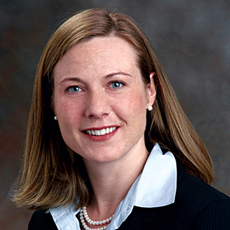
Recently, Lutheran Life Communities CFO Carl Moellenkamp spoke with over two dozen of the nation’s most active tax-exempt senior living bond investors at our 10th Annual National Senior Living Investor Workshop. The topic was a compelling one: How do organizations successfully balance growth in new services and new locations while continuing to redevelop older communities?
I’ve always been impressed by how Lutheran Life Communities keeps it simple with mission and ministry. At its beginning in 1892, Pastor August Reinke and a community of lay people responded to a call to build a place of care for their families and neighbors. In 1893, the Evangelical Lutheran Old Folks Home association of Chicago was born.
Fast-forward 120 years and Lutheran Life Communities serves residents at all levels of care in over 1200 units at five locations, with a sixth location in development, and provides home healthcare and a range of related services beyond their walls. Success—this is how they do it.
Plan and Prioritize
Lutheran Life is committed to integrated, strategic project planning and prioritization. With help from a third-party strategic capital planning tool, management uses real numbers and involves all operational departments in the planning process. Plans look ahead five years and are constantly adjusted to allow management to make the best decisions based on the best possible data and projections.
Reposition Early and Often
Repositioning buildings and service lines is done on a regular basis, ahead of a crisis in census or in reaction to new competition that forces action that may not be well thought out. Today, skilled nursing in particular needs to be updated to employ more technology and refresh and rebuild physical plants to address a different consumer. There is less demand for long-term care and a greater focus on shorter term rehabilitation, which brings shorter stays and younger residents. But, this may change at any time; so keeping close to leading indicators is a new focus. Home healthcare is increasing.
As for Accountable Care Organizations—getting a foot in the door is difficult but not impossible. Hospitals are still figuring it all out with their internal staff and physician groups and skilled nursing facilities are low on their radar. Make presentations to the CEOs of hospitals to make a case for why you are a great partner. And be prepared: your long history or mission may take a backseat to results. Data is the key to these hospitals; you can use your data to show hospital CEOs that you can take care of chronic patients sooner and better than they can. And with all of these new services and revenue streams, there will be a need for new spaces, new equipment, capital and planning.
Developing New Locations
Recognize that developing a full CCRC in a new location requires a long lead-time and an understanding that the effort will pull resources from other areas of the organization. First and foremost? Find the right opportunity in a compelling market, one that is related to your mission or in like-minded communities where there is a need for ministry. Say ‘No’ regularly. The Lutheran Life organization has turned down dozens of opportunities in the past few years that did not meet these hurdles.
Once you’re committed to a concept and project, don’t be afraid to change it. Expect to incorporate feedback from the market about unit size, amenities, contract pricing and even the right mix of levels of care. The path to success is not a straight line anymore.
Leveraging the Benefits of System
Finally, the ability to extend your mission into the community grows exponentially as you grow as a system operator. Spreading talent and costs among a larger number of units is a must to meet the financial changes coming to the long-term care industry. The standardization of best practices from one project to another in all areas such as care delivery, finance, information technology and even local community development and fundraising allows Lutheran Life Communities to serve their seniors in more and better ways.
Amy Castleberry is the senior vice president/senior living credit specialist at Ziegler.




